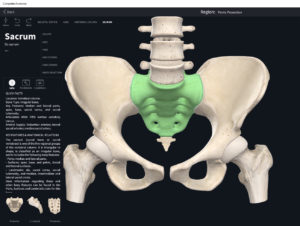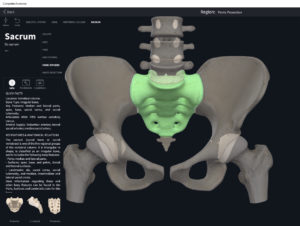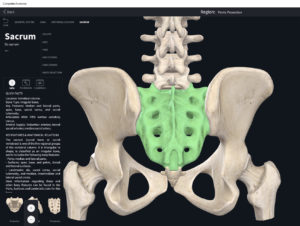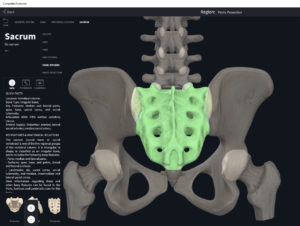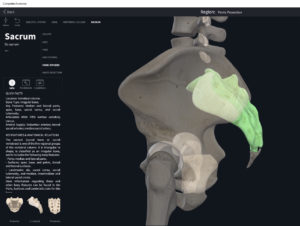Anatomy & Physiology: Bones—Vertebral Column, Sacrum.
Structure.
- Five sacral bones fuse (between ages 16-18) to form the sacrum.
- Triangular shaped.
- The sacrum is a keystone structure for the lumbo-pelvic-hip complex.
- Female sacrum (to accomodate childbirth): shorter, wider, and more curved than male sacrum.
- The smooth concave portion is directed anteriorly. 4 lines mark the fusion. Bilateral to these lines are 4 sacral foramina from anterior to posterior. Bilaterally like the sacral ala or “wings”.
- Median sacral crest: fused spinous processes.
- Lateral sacral crest: fused transverse processes.
- Sacral hiatus: the gap created when the laminae of the 4th and 5th sacral vertebra fail to meet or fail to align neatly (can happen sometimes).
- Sacral promontory: the anterior projecting border of the superior sacram. This is used as a landmark for measuring the pelvis.
- Auricular surface: “ear”; bilaterally. Articulates with the ilium of the hip bone forming the sacroiliac joint (SI joint).
- Superior articular processes articulate with the inferior articular processes of L5.
Function.
Clinical Significance.
References
Biel, A. (2015). Trail guide to the body: A hands-on guide to locating muscles, bones and more.
Cedars-Sinai. (2018). Vertebrae of the spine. Retrieved from https://www.cedars-sinai.org/health-library/diseases-and-conditions/v/vertebrae-of-the-spine.html
Jenkins, G., & Tortora, G. J. (2012). Anatomy and Physiology: From Science to Life, 3rd Edition International Stu. John Wiley & Sons.
Muscolino, J. E. (2017). The muscular system manual: The skeletal muscles of the human body.
